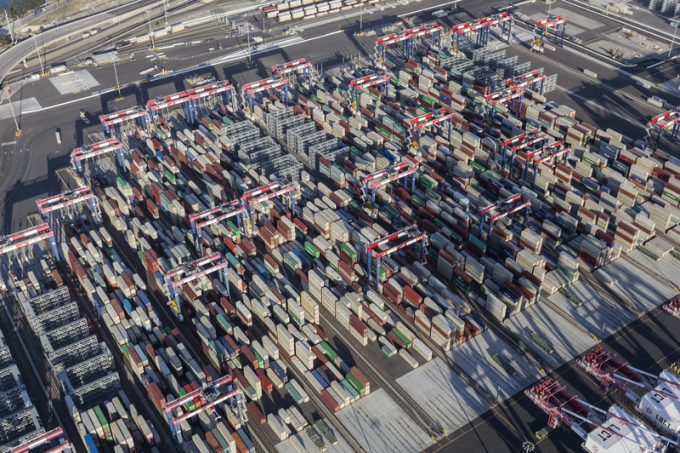Bangladesh looks at demurrage waiver as containers pile up in Chittagong
The Chittagong port yards now have close to 40,000 teu of containers, mainly loaded with ...
TFII: SOLID AS USUALMAERSK: WEAKENINGF: FALLING OFF A CLIFFAAPL: 'BOTTLENECK IN MAINLAND CHINA'AAPL: CHINA TRENDSDHL: GROWTH CAPEXR: ANOTHER SOLID DELIVERYMFT: HERE COMES THE FALLDSV: LOOK AT SCHENKER PERFORMANCEUPS: A WAVE OF DOWNGRADES DSV: BARGAIN BINKNX: EARNINGS OUTODFL: RISING AND FALLING AND THEN RISING
TFII: SOLID AS USUALMAERSK: WEAKENINGF: FALLING OFF A CLIFFAAPL: 'BOTTLENECK IN MAINLAND CHINA'AAPL: CHINA TRENDSDHL: GROWTH CAPEXR: ANOTHER SOLID DELIVERYMFT: HERE COMES THE FALLDSV: LOOK AT SCHENKER PERFORMANCEUPS: A WAVE OF DOWNGRADES DSV: BARGAIN BINKNX: EARNINGS OUTODFL: RISING AND FALLING AND THEN RISING

US importers are bracing themselves for more delays in the coming weeks, as congestion at the major west coast container gateways worsens, exacerbated by shortages of container chassis and rail cars.
“We’re seeing unprecedented levels of cargo,” said Mario Cordero, executive director of Port of Long Beach. And a spokesperson for the port of Los Angeles added: “We have seen particularly heavy volumes in recent months, warehouse space is at a premium and there have been issues with chassis availability.”
Some logistics companies issued warnings to their clients as early as December about the increased congestion and import flows have not abated since, putting increasing strain on infrastructure.
As The Loadstar reported yesterday, as many as 22 vessels were added by lines in recent weeks to meet demand, and the terminals have struggled to unload them.
American Global Logistics reported that in some cases vessels were waiting two or three shifts after arrival before labour could be allocated to them.
In its weekly update, Flexport warned clients of “extreme congestion” at the Los Angeles/Long Beach port complex, as well as at the New York ports.
The company identified a combination of factors: peak season traffic; the run-up to Chinese New Year; and the prospect of further tariffs on imports from China.
“Spring cargo shipments are up compared with this time last year, mostly due to the tariff situation,” said a spokesman for XPO Logistics. “We believe that’s caused some ripple effects, including an increase in the amount of time containers stay at the ports and the time it takes for a truck to visit.”
The congestion at the terminals has impacted chassis availability, which is, in turn, aggravating the situation further, forwarders say. And according to MIQ Logistics, rail cars have also been in short supply.
Burlington Northern Santa Fe reported it had been “moving strong volumes while confronting challenging conditions in some areas of the network”.
Operators are looking to the Chinese New Year holiday, which starts on 5 February, to ease the pressure and allow them to get back on top of things.
“Chinese New Year should provide a breather and allow the supply chain to recover a bit before cargo flows resume in earnest. The port is working closely with all our partners to move containers through the harbour and we thank everyone for their patience,” said Long Beach’s Mr Cordero.
The wild card in this scenario is the question of whether the US and China will make progress towards resolving the trade dispute and avert further tariffs. Flexport and MIQ Logistics have advised customers delays are likely to continue into mid- or late February.
“We see these stronger cargo volumes continuing for the next few weeks due to the uncertainty surrounding tariffs,” the XPO spokesperson said.
Vessel activity looks set to shrink significantly after Chinese New Year. Nerijus Poskus, vice-president and global head of ocean freight of Flexport, noted that the container lines had announced more than 40 blank sailings on the transpacific eastbound sector for February, along with nine or so Far East westbound.
Capacity will likely be tight then, he warned.
Comment on this article